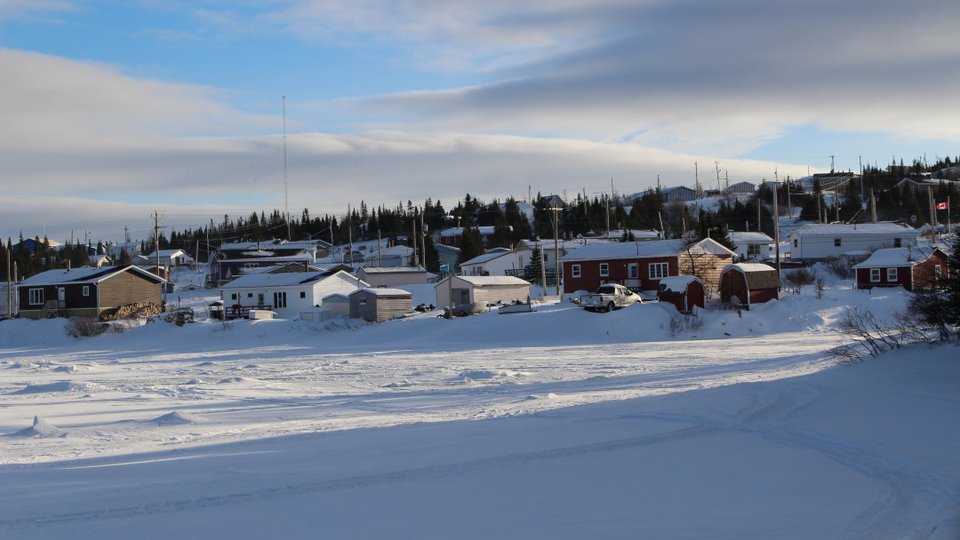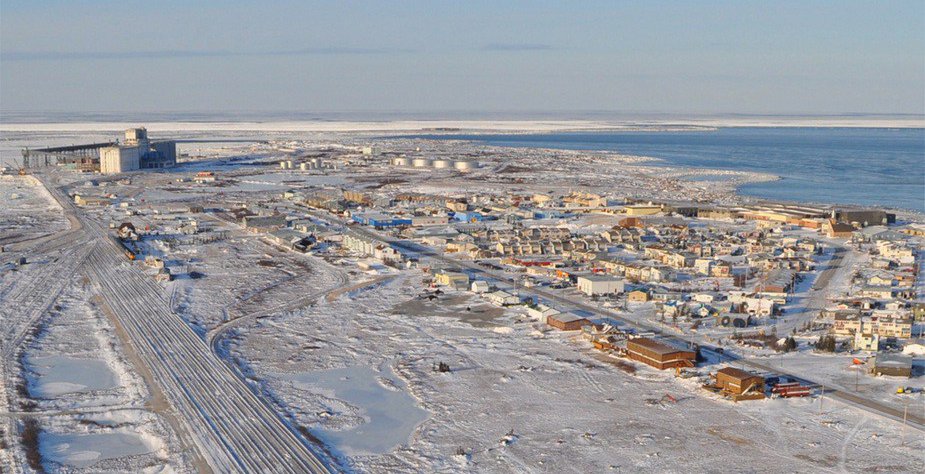
ummer is ending in Churchill, Manitoba. I started watching seasons change there 25 years ago as a graduate student, lived there in the 1990s and just brought my family up for the first time. A polar bear came poking around on our second-to-last morning, possibly drawn by the smells of breakfast. The irony hasn’t yet caught on everywhere: Churchill’s polar bears became a global icon of climate change, yet the town took a body blow from a rapidly changing environment before the bears did.
Along with the promise of frosty mornings and bug-free days the feeling of an impending something hung in the air this summer. “Doom” would be far too melodramatic for residents’ tastes here, but the stakes are such that outside observers might be forgiven for using it.
In May, floods washed out the railway that supplies this roadless town’s food, energy, goods and economical travel. It remains closed indefinitely, according to its Denver-based owner, Omnitrax. In better times the railway also exported Canadian grain through the town’s seaport, but the port’s owner (also Omnitrax) closed it in 2016, putting both it and the railway up for sale. Ninety-three people were thrown out of work, out of a town of 800. Job cuts at the health center that year didn’t help matters.
Estimates to repair the line run from C$2 million to C$60 million ($1.64 million to $49.3 million), but for 16 weeks neither Omnitrax nor the provincial or federal governments showed clear willingness to take financial responsibility for restoring the rail service. What likely kept parties from stepping forward is the “Pottery Barn Rule” in reverse: Whoever fixes it, buys it. It couldn’t just be a one-time fix, either: the 275-km (170-mile) railway was built in 1929 and runs over now-thawing permafrost. Before this outage it averaged six derailments a year. Anodyne announcements about working together to find a solution have abounded, but there is precious little construction season left now for rebuilding. Even the September 8 federal announcement promising interim funding to transfer ownership and repair the railway is premised on conditions that may be hard to meet quickly.
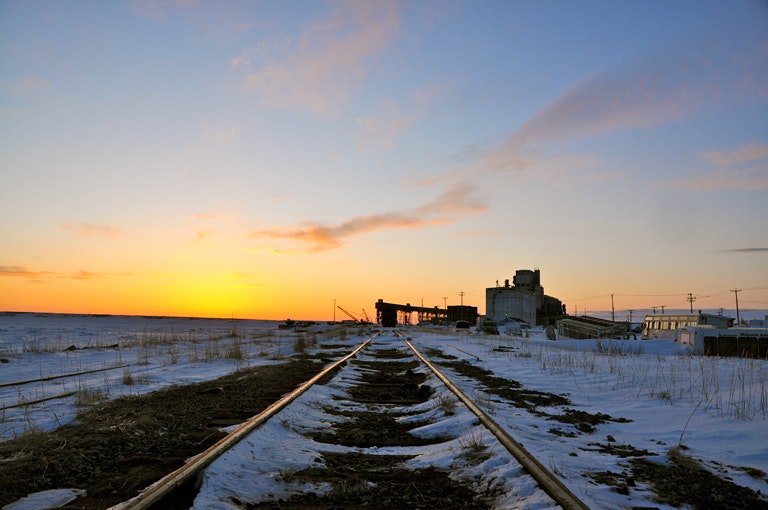
The sun sets over the railway tracks leading to the Port of Churchill. (Photo courtesy Discover Churchil
Whatever happens to Churchill next is fundamentally going to be determined by energy supply. Right now, six steel cylinders on the tundra are pretty much all that will keep the town warm through the coming winter. They contain only three to four months’ supply of the propane that heats 80 percent of Churchill’s houses. In the absence of a railway they will be filled after next month’s barge arrives and will be empty around Christmastime. There will apparently be supplementary propane shipped up soon by the provincial government, but the next barge after that won’t appear before July. To Churchill, that looks like Manitoba giving up.
Residents and businesses genuinely feel “held hostage.” Some characterized their town’s situation as double jeopardy: Last year’s job losses meant there was simply less money in town just as prices unexpectedly jumped. The people who live there are stoic but even the most resilient can tire of taking hits, and Churchill has taken more than its share. Before Mother Nature’s latest hammering of aging infrastructure a long series of decisions made elsewhere profoundly affected livelihoods over whole generations.
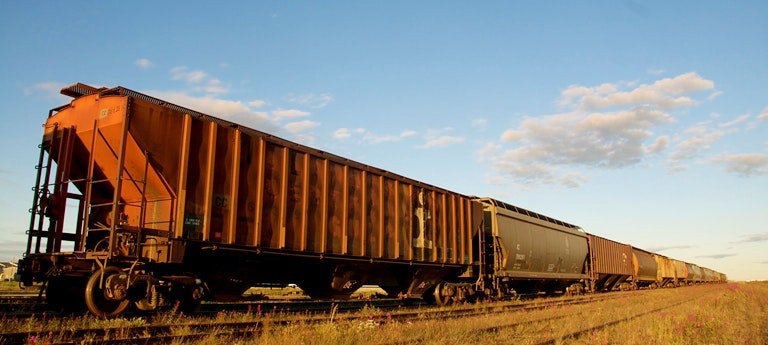
A grain train sits on a siding at Churchill, Manitoba. (Photo courtesy Discover Churchill)
In 2013, I had a graduate student from Churchill interview residents about their roles in environmental governance as part of a larger circumpolar project. She documented how the railway and port dominate the local economy, and how in the 1970s the diversion of the Churchill River for hydropower disconnected people from a productive ecosystem they’d long relied upon. The diversion lowered water levels, eliminating the only local freshwater fishery and preventing boat access upriver to hunting areas and traplines. Later mitigations didn’t replace those losses. Her data show that trust in outside institutions is lower here than anywhere else in the circumpolar North. Imagine how the current political game of hot potato has gone over in that context. Politicians, pay attention: This is a context in which empty promises and virtue-signaling are seen for what they are and populism could start to look appealing.
An Alberta political aspirant recently proposed his province step up and buy the port, building a pipeline to get their oil to market at less of a cost than their current bottleneck exacts. In 2014, Churchill decisively rejected Omnitrax’s oil-by-rail scheme because of its extraordinary environmental risks. Opposition to oil export hasn’t dimmed. My own initial reaction was that this was a desperate pipe dream, but part of the idea stuck with me. Take the tar sands pipeline out of the mix and what remains is a collaboration among three resource-producing provinces to run their own seaport, far from a newly destabilized United States, and with a lengthening shipping season.
If we really wanted to see what a sustainable Arctic community could look like this would be a great chance to try. What would it take? Fundamentally, achieving such a transition would require reducing the community’s vulnerability and rebuilding for a future economy, not a 19th-century one. It’s unsurprising that the late 20th-century idea of a road north through Churchill to Nunavut has lately resurfaced. This too may be worth skipping over given its enormous projected costs, plus the profound social and ecological impacts that come from such road connections. The permafrost will continue to melt so the railway will require a serious commitment: A consortium of First Nations and local businesses is ready to step up. Perhaps the road need only be built southward from Nunavut to Churchill’s railhead, on northerners’ own terms.
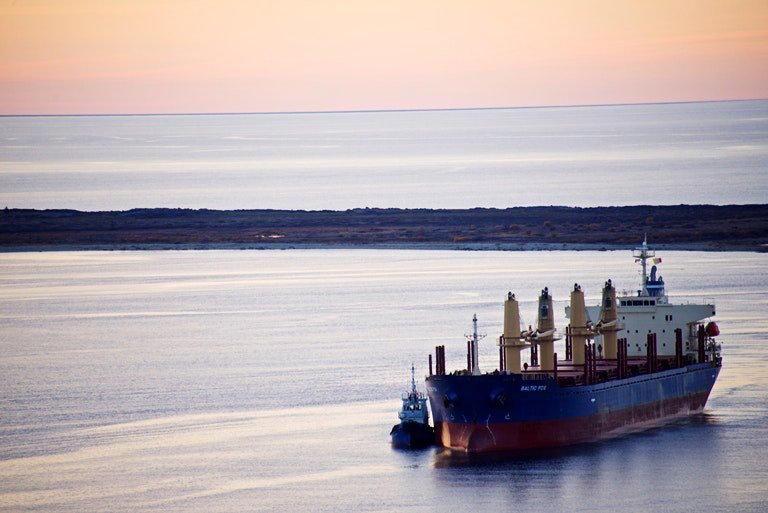
The freighter Baltic Fox comes into port in the Churchill River estuary. (Photo courtesy Discover Churchill)
Churchill and the other communities along the line will need to further decarbonize their energy systems, the everyday vulnerabilities of which are now clear. Heating buildings with locally produced electricity rather than with petroleum products would provide the biggest gains. It’s a hard environment on renewable energy installations but not an impossible one. Smaller distributed systems could be backed up by their existing connection to the big generating stations on the Nelson River. There would be an element of reciprocity in that, too, since those developments exacted such a cost on land and people. Even though one’s still under construction, two local research centers could support local intellectual capital to envision and carry out the legwork for transformation. The port’s traffic can be diversified, building on prior trials. It has shipped grain, ore and fertilizer. Saskatchewan, perhaps it’s time to try potash exports?
Most fundamentally, such a regional initiative could advance reconciliation between Indigenous peoples, non-Indigenous northerners and the big institutions that still control so much up there. Bringing such a vision into being means changing how decisions get made about Churchill, requiring political support both up north and down south. Southerners, we’ll have to let the northerners lead the conversation for once, and ensure provincial and federal leaders know we support such an approach. Churchill will need to make it clear they’re not just asking for a restoration of services, vital as they are, but offering something special in return. Northern entrepreneurs and social innovators need to be able to try bold, different ideas. Investors in a sustainable Arctic need to be found. There is a shared history of cultures coming together peaceably in this corner of the North. Getting back to it will bridge existing divides – north/south, Indigenous/settler, have/have not – and start a journey that invites and entices Canada as a whole to come along.
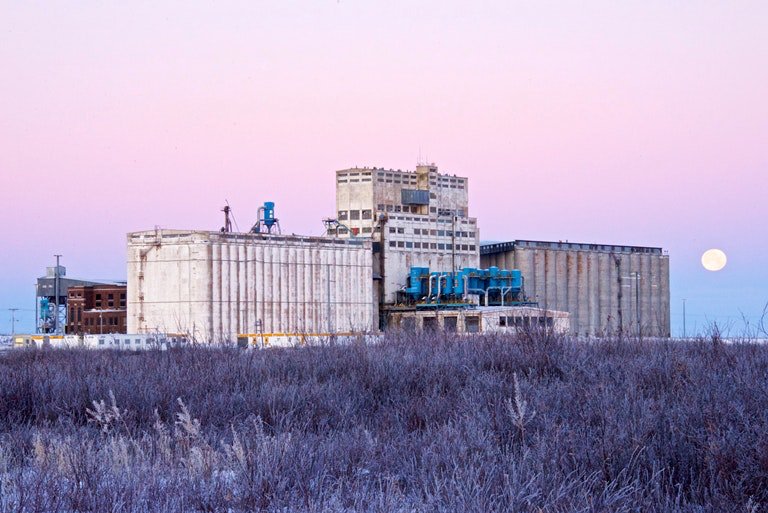
The moon rises beside the Port of Churchill’s grain elevator. (Photo courtesy Discover Churchill)
Douglas Clark is a centennial research chair and associate professor in the University of Saskatchewan School of Environment & Sustainability.

